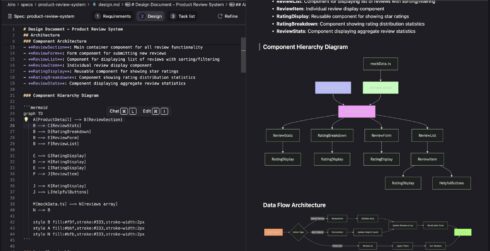
Amazon is releasing a new AI IDE to rival platforms like Cursor or Windsurf. Kiro is an agentic editor that utilizes spec-driven development to combine “the flow of vibe coding” with “the clarity of specs.”
According to Amazon, developers use specs for planning and clarity, and they can benefit agents in the same way.
Specs in Kiro are artifacts that can be used whenever a feature needs to be thought through in-depth, to refactor work that requires upfront planning, or in situations when a developer wants to understand the behavior of a system.
Kiro also features hooks, which the company describes as event-driven automations that trigger an agent to execute a task in the background. According to Amazon, Kiro hooks are sort of like an experienced developer catching the things you’ve missed or completing boilerplate tasks as you work.
The basic workflow of building with Kiro specs and hooks consists of four steps. First, Kiro unpacks requirements from a single prompt and creates user stories that include Easy Approach to Requirements Syntax (EARS) notation acceptance criteria so that developers can verify that Kiro is building what they want. For example, the prompt “Add a review system for products” would lead to the creation of user stories for viewing, creating, filtering, and rating reviews.
Next, it analyzes the existing codebase and spec requirements to create a design document that includes data flow diagrams, TypeScript interfaces, database schema, and API endpoints.
Then, Kiro creates tasks and sub-tasks, and sequences them based on dependencies and links each to requirements. Each task will include details like unit tests, integration tests, loading states, mobile responsiveness, and accessibility requirements for implementation.
Finally, hooks are executed when files are saved or created, such as updating a test file when a React component is saved or updating README files when API endpoints are changed.
Kiro also includes features like MCP support, steering rules for AI behavior, and an agentic chat mode.
“Our vision is to solve the fundamental challenges that make building software products so difficult—from ensuring design alignment across teams and resolving conflicting requirements, to eliminating tech debt, bringing rigor to code reviews, and preserving institutional knowledge when senior engineers leave. The way humans and machines coordinate to build software is still messy and fragmented, but we’re working to change that. Specs is a major step in that direction,” Kiro wrote in a blog post.






